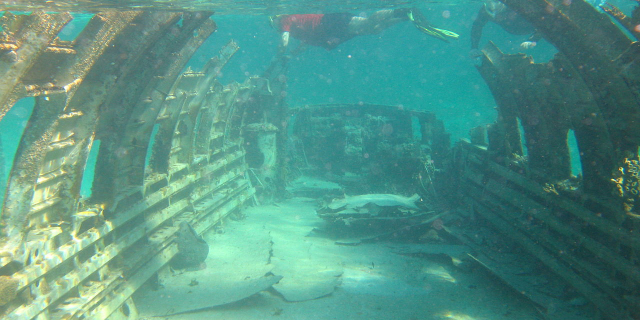Citadelle Laferrière
The Citadelle Laferrière (Haitian Creole: Sitadèl-Laferyè), commonly known as La Citadelle (English: "The Citadel"), is a large early 19th-century fortress located in Milot in Nord, Haiti. It is situated on the Bonnet à l'Evêque mountaintop located approximately 8 kilometres (5.0 mi) uphill from the town of Milot, 27 kilometres (17 mi) south of the city of Cap-Haïtien, and 15 kilometres (9.3 mi) southwest of the Three Bays Protected Area.
The Citadelle Laferrière was commissioned by Haitian revolutionary Henri Christophe, for whom it is also named Citadelle Henri Christophe, and built by tens of thousands of former slaves. It was the main fortification of the newly independent First Empire of Haiti's defensive strategy against a potential French incursion. The Citadelle is one of few Africans in New World-derived military fortification in the New World, as well as the first example of African-derived colonial archite...Read more
The Citadelle Laferrière (Haitian Creole: Sitadèl-Laferyè), commonly known as La Citadelle (English: "The Citadel"), is a large early 19th-century fortress located in Milot in Nord, Haiti. It is situated on the Bonnet à l'Evêque mountaintop located approximately 8 kilometres (5.0 mi) uphill from the town of Milot, 27 kilometres (17 mi) south of the city of Cap-Haïtien, and 15 kilometres (9.3 mi) southwest of the Three Bays Protected Area.
The Citadelle Laferrière was commissioned by Haitian revolutionary Henri Christophe, for whom it is also named Citadelle Henri Christophe, and built by tens of thousands of former slaves. It was the main fortification of the newly independent First Empire of Haiti's defensive strategy against a potential French incursion. The Citadelle is one of few Africans in New World-derived military fortification in the New World, as well as the first example of African-derived colonial architecture. Designated by UNESCO as a World Heritage Site in 1982 along with the Sans-Souci Palace, also commissioned by Christophe, the fortress is universally regarded as a landmark of Haiti.
 Walls of the citadel.
Walls of the citadel.The Citadelle was commissioned in 1805 by Henri Christophe and completed in 1820. The fortress was built as part of a system of fortifications designed to thwart potential foreign incursions; notably the French (Haiti was under French domination, the Haitians defeated them and built the fortress to prevent them seizing the country again; it turned out to be unnecessary, for Napoleon, occupied with his European campaigns, never tried to regain the country). During the stronghold's conceptual phase, Christophe was a general in the Haitian army and chief administrator of the country's northern regions. The ensuing power struggle he had with his rival and fellow revolutionary Alexandre Pétion, would result in his self-declaration as king of Northern Haiti in 1811.[1]
The Citadelle, built by forced labor that cost up to 20,000 lives, was built several kilometres inland atop the 900-metre (3,000 ft) Bonnet à l’Eveque mountain, as a means of providing the optimal military vantage point. The location enabled Haitian forces to strategically keep watch over a vast distance, from the nearby valleys to the coastline.[2][3] Cap-Haïtien and the adjoining Atlantic Ocean are visible from the roof of the fortress. It is the largest fortress in Haiti and one of the largest in the New World; it continues to serve as a symbol of Haitian independence.[4]
The Haitians outfitted the fortress with 365 cannons of varying size, assembled from the abandoned munitions left behind by the European forces that formerly occupied the island. The enormous stockpiles of cannonballs still sit in pyramidal stacks at the base of the fortress walls. Since its construction, the fortress has withstood numerous earthquakes, though a French attack never came and it was eventually abandoned.
 View from the walls.
View from the walls.In the event of an invasion, Christophe planned to have his military burn the valuable crops and food stocks along the coast, then retreat to the fortress, setting ambushes along the sole mountain path leading to the Citadelle.
Christophe suffered a stroke in 1820, and some of his troops mutinied. Shortly afterwards, he committed suicide—according to legend, by shooting himself with a silver bullet.[5] Loyal followers covered his body in quicklime and entombed it in one of the Citadelle's interior courtyards to prevent others from mutilating the corpse.[6]



























Add new comment